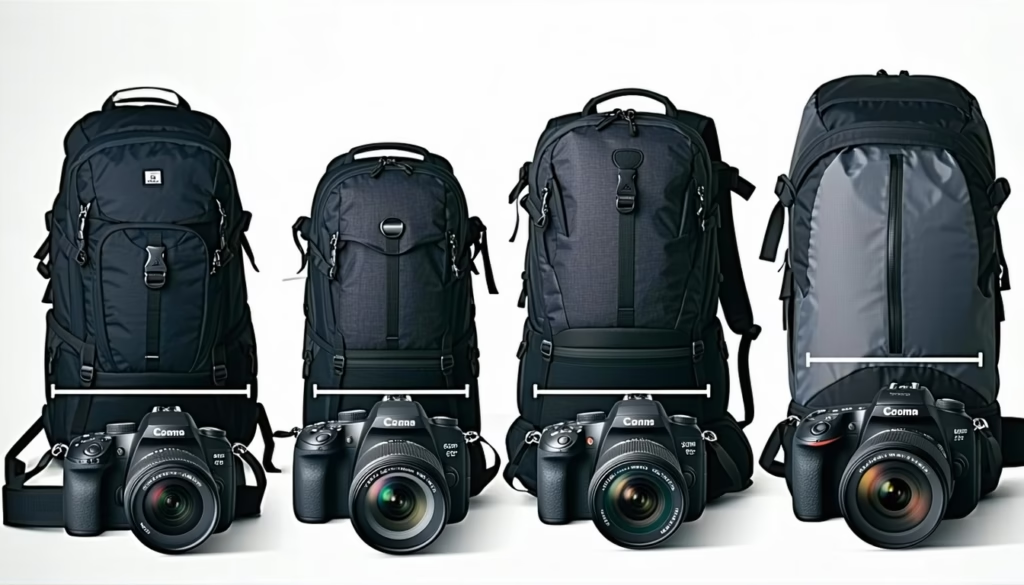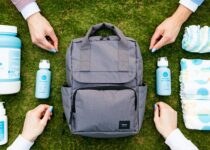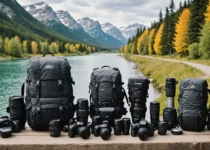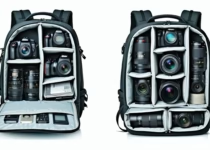How To Choose The Right Size Camera Backpack

When you first search for how to choose the right size camera backpack, you might feel overwhelmed by pack capacities, divisibility, and future gear plans. Choosing a backpack that fits your gear like a glove keeps everything organized, protected, and ready to shoot. In this guide, you’ll learn to assess your equipment, measure dimensions, compare bag volumes, and test fit options before buying. By the end, you’ll know exactly which pack size works for your camera bodies, lenses, and extras.
What’s coming up: lists, a handy size comparison table, and tips on comfort features. Ready to find your ideal camera backpack? Let’s dive in.
Assess Your Gear Needs
Start by listing every piece of camera equipment you own now and might buy soon. That way, you avoid choosing a pack that’s too small or way too big.
List Your Camera Equipment
- Camera bodies (DSLR, mirrorless, film)
- Lenses (prime, zoom, telephoto)
- Accessories (flash, filters, batteries, chargers)
- Extras (tripod, laptop, tablet, drone)
Grab a notebook or use your phone to jot down gear. Include rough dimensions if you know them. Wondering about lens fit? Check out these tips on organizing lenses inside a camera backpack.
Factor In Future Gear
Are you planning to expand your kit soon? Maybe you’ll add a new telephoto lens or a drone. Build in extra room for growth, about 10 to 20 percent of your current gear volume. This buffer helps you avoid an immediate upgrade.
Measure Your Equipment Dimensions
After listing gear, it’s time to measure. Accurate dimensions help you compare options and avoid surprises.
Camera Body Size
Use a tape measure to record the width, height, and depth of each camera. Round up to the nearest half inch. For bulky DSLR bodies with battery grips, give extra room.
Lens Dimensions
Measure each lens at its widest point, including lens hoods. Remember that zoom lenses can extend. Note both retracted and extended lengths if possible.
Accessory Space
Consider where you’ll store batteries, memory cards, and chargers. Small pouches can take up to 1 liter of volume. Add this to your total gear footprint.
Understand Backpack Capacities
Pack capacity (in liters) tells you roughly how much gear you can carry. Here’s a simple breakdown.
Small (10-15L)
Ideal for minimalist shooters or mirrorless users. You can carry:
- One camera body
- One or two compact lenses
- Basic accessories (batteries, cards)
Medium (16-25L)
Great for hobbyists who want extra gear room. You can fit:
- Two camera bodies
- Three to four lenses
- Flash, batteries, filters, small tablet
Large (26L+)
Best for pros or heavy shooters on long trips. You can pack:
- Multiple camera bodies
- Five or more lenses
- Tripod (if external), laptop, drone gear
Capacity Comparison Table
| Capacity | Gear Fit | Use Case |
|---|---|---|
| 10-15L | 1 body, 1-2 lenses | Urban street, light travel |
| 16-25L | 2 bodies, 3-4 lenses | Day trips, casual shoots |
| 26L+ | 3+ bodies, 5+ lenses | Professional, extended trips |
Wondering how to fit multiple bodies? Check how to fit multiple camera bodies in one backpack.
Consider Comfort Features
A well fitting pack feels good even after hours of shooting. Look for these comfort basics.
Padding And Support
Thick shoulder straps, an ergonomic back panel, and a padded hip belt all help distribute weight evenly. Test straps for a snug fit without pinching shoulders.
Strap And Harness Design
Adjustable harness systems allow you to fine-tune load positioning. Some packs let you raise or lower shoulder straps to match your torso length.
Ventilation And Load Distribution
Mesh back panels improve airflow, reducing sweat on hot days. Sternum straps add stability when you move or shoot on uneven ground.
If you worry about strain, read how to prevent back pain when carrying camera gear.
Match Backpack To Shooting Style
Different shoots demand different features. Pick a pack that suits your main photography type.
Travel And Street Photography
You need a low-profile pack that blends in. Choose a medium capacity (16-20L) bag for quick access to kit. Side zipper doors help with fast retrieval. Learn more about using a camera backpack for street photography.
Outdoor And Adventure Shoots
Hiking, wildlife, or landscape shooting calls for rugged packs, water resistance, and room for a tripod. Look into large 25L+ options with external tripod mounts. Check the difference between hiking and camera backpacks.
Studio And Event Work
When shooting events, you may need a laptop and extra flash units. A 20-25L pack with a laptop compartment keeps tech safe. Explore camera backpack vs hard case: which is better if you need tougher protection?
Evaluate Additional Features
Beyond size and comfort, extra features can make your life easier.
Quick Access Options
Side and top access zippers let you grab gear without taking the pack off. If you shoot fast-paced events, consider packs featured in the best camera backpack layouts for fast access.
Waterproofing And Protection
Rain covers and water-resistant fabrics shield gear from moisture. If you need heavy-duty water defense, see what to look for in a waterproof camera backpack.
Modular Dividers
Adjustable foam inserts or MOLLE panels help you customize interior space. These inserts let you swap compartments based on shoot size. Learn to create your own setup in how customizing a camera backpack with inserts.
Don’t forget pockets for accessories like memory cards. Or check the safest way to store memory cards in a backpack.
Test Fit In Store
Trying your pack on before you buy helps catch fit issues early.
Pack It And Walk
Load the backpack with items that mimic your gear weight (books work well). Walk around the store or office for ten minutes. Notice pressure points and load stability.
Adjust And Reassess
Tweak shoulder straps, hip belt, and sternum strap for a balanced feel. If the pack shifts or digs in, try a different model or size. A comfortable fit now saves aches later.
Finalize Your Choice
After assessing capacity, comfort, and features, it’s decision time. Ask yourself:
- Does this pack fit all my gear plus growth?
- Is it comfortable on longer walks or shoots?
- Do I have quick access where I need it?
- Will it protect against weather and impacts?
If you answered yes to these questions, you’ve likely found the right size camera backpack. Remember, buying a pack is an investment in your gear’s safety and your shooting ease.
FAQs
What size camera backpack do I need for a mirrorless kit?
For a mirrorless setup with one body and two lenses, a 10-15L pack usually works. If you add a small tablet or extra battery, bump up to 16L.
Can I fit a tripod inside a camera backpack?
Most packs use external tripod attachments. Some large models let you strap compact tripods on the side. See how to carry a tripod using a camera backpack for tips.
How much extra room should I leave for future gear?
Aim for 10 to 20 percent more volume than your current gear space. This buffer covers new lenses or accessories without overstuffing.
Are water-resistant packs enough for rainy shoots?
Water-resistant fabrics and rain covers guard against light rain. For heavy downpours or long exposure, choose a fully waterproof pack or additional rain gear.
How can I organize small accessories inside a backpack?
Use padded dividers and small pouches (1 to 2 liters). You can also tuck cables and cards into zippered mesh pockets. Explore essential features every photographer should want in a backpack for more.
Is a larger capacity pack always better?
Not always, because extra volume means more weight. Pick the smallest pack that fits your current and planned gear to stay agile.
How do I prevent back pain with a loaded backpack?
Make sure the hip belt carries most weight. Adjust the straps so the pack sits high on your back. For more posture tips, see how to prevent back pain when carrying camera gear.
Conclusion
Choosing the right size camera backpack comes down to matching your gear list, body measurements, and shooting style. By measuring equipment, comparing capacities, and testing fit in store, you’ll steer clear of packs that are too small or overkill.
Investing time in this process means your equipment stays organized, protected, and ready to shoot whenever inspiration strikes. Now that you know the key steps, go find the perfect pack for your next adventure.


